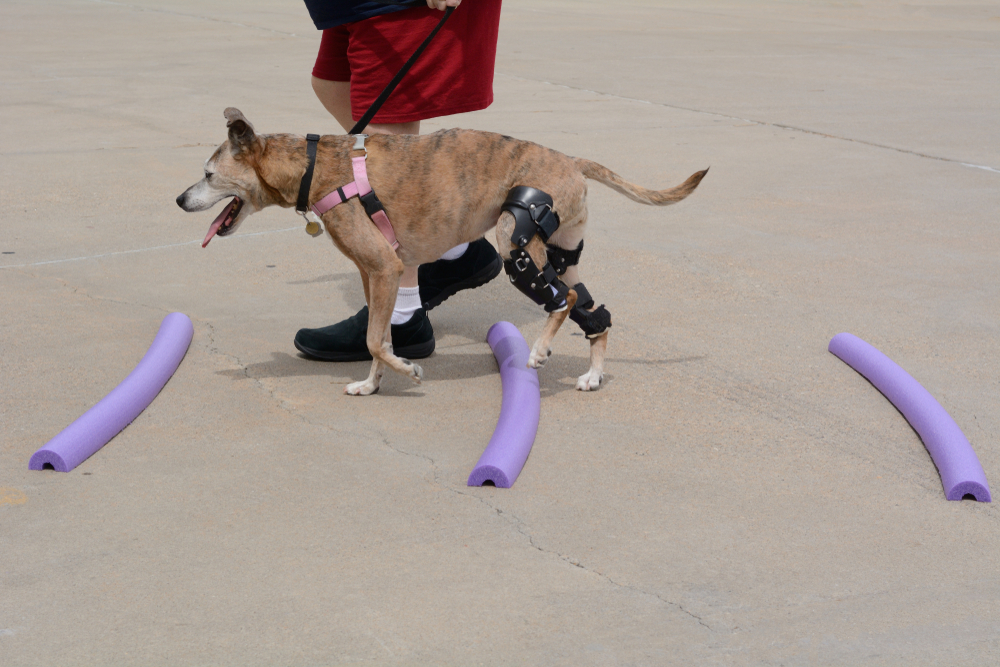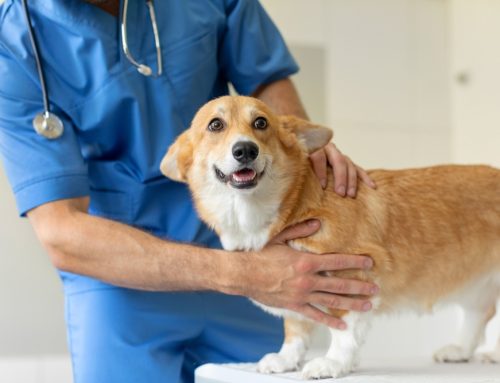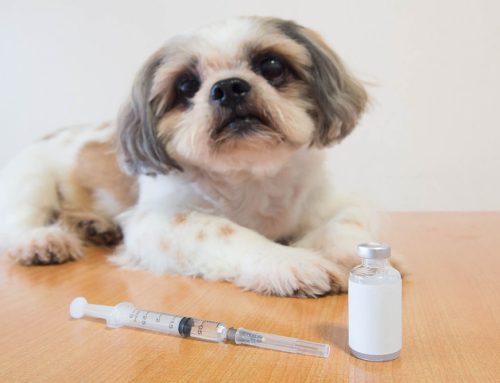Canine rehabilitation is a growing field dedicated to helping dogs recover from injury, surgery, or chronic conditions. Rehabilitation therapy modalities enable dogs to regain strength and mobility, ensuring they lead happier, healthier lives. The Central Kentucky Veterinary Center team uses rehabilitation to help patients deal with various health conditions. We’ve compiled a handy guide to familiarize pet owners with rehab’s benefits.
What is canine rehabilitation?
Canine rehabilitation is designed to help your dog recover from disease or injury and can also aid in weight loss. Like physical therapy for humans, rehab focuses on reducing pain, improving mobility, and enhancing strength and flexibility. Our canine rehabilitation therapists combine techniques, including hydrotherapy, manual therapies, exercise programs, and therapeutic modalities, to provide synergy and meet each dog’s needs.
Canine rehabilitation benefits
Canine rehabilitation benefits dogs with variable needs, including seniors, post-operative patients, and chronic pain patients. Benefits include:
- Pain relief — Therapeutic exercises and modalities can reduce pain signaling and underlying inflammation to promote pain relief.
- Mobility improvement — Rehabilitation helps restore strength, flexibility, and overall function, improving mobility.
- Speedy recovery — Post-surgical rehabilitation accelerates healing and reduces pain and inflammation, which can hasten recovery and reduce complications.
- Quality of life — Rehabilitation enhances quality of life by addressing chronic pain and keeping dogs active, so they can enjoy their regular activities longer.
- Weight management — Supervised exercise programs help manage weight and reduce joint pain or stress exacerbated by excess weight.
Conditions canine rehabilitation can treat
At some point, most dogs can benefit from rehabilitation therapy, which can help significantly with the following:
- Orthopedic injuries — Non-surgical muscle, bone, ligament, and tendon injuries
- Post-surgery recovery — Knee, hip, spine, and other orthopedic surgeries
- Neurological disorders — Intervertebral disc disease, degenerative myelopathy, and neuromuscular disorders
- Chronic joint disorders — Osteoarthritis, inflammatory diseases, and joint dysplasias
- Obesity — Weight loss and overall fitness
Canine rehabilitation techniques
The techniques recommended for your pup will vary based on their injury and temperament. We often combine therapies and also use traditional medications for the greatest efficacy. Possibilities include:
- Hydrotherapy — Underwater treadmill walking and swimming with water resistance and buoyancy assist pets.
- Laser therapy — Low-level laser therapy or cold laser reduces inflammation and pain and promotes healing.
- Manual therapy — Therapeutic massage and joint mobilizations improve blood flow, reduce muscle tension, and alleviate pain.
- Electrotherapy — Mild electrical currents are used regionally to relieve pain and re-train muscles.
- Therapeutic exercise — Customized exercise programs in the clinic and at home improve flexibility, balance, and strength.
- Heat and cold therapy — Heat packs relax muscles and improve blood flow, while cold packs reduce inflammation and pain.
What to expect during your pet’s rehabilitation program
During the initial consultation, our rehabilitation therapist will assess your dog’s condition, review their medical history, and determine their needs. This evaluation often includes a physical examination, behavioral evaluation, gait analysis, and imaging tests, such as X-rays. With this information, we will develop a customized program for your pet. The frequency and duration of therapies are highly variable, and we can make adjustments as your dog progresses.
Canine rehabilitation at home

Successful rehabilitation often extends beyond the clinic. You must not only perform prescribed exercises at home but also restrict their activities as recommended, as progressing too quickly can result in poor outcomes. Additionally, modifying your home environment with non-slip mats and ramps can help recovering pets move around more easily.
Whether your dog is recovering from surgery, dealing with chronic pain, or hoping to return to dog sports after an injury, rehabilitation plays a critical role in recovery. Consult with a Central Kentucky Veterinary Center rehabilitation team member, so they can develop a rehab plan for your dog to help them lead a happier, healthier life.







Leave A Comment